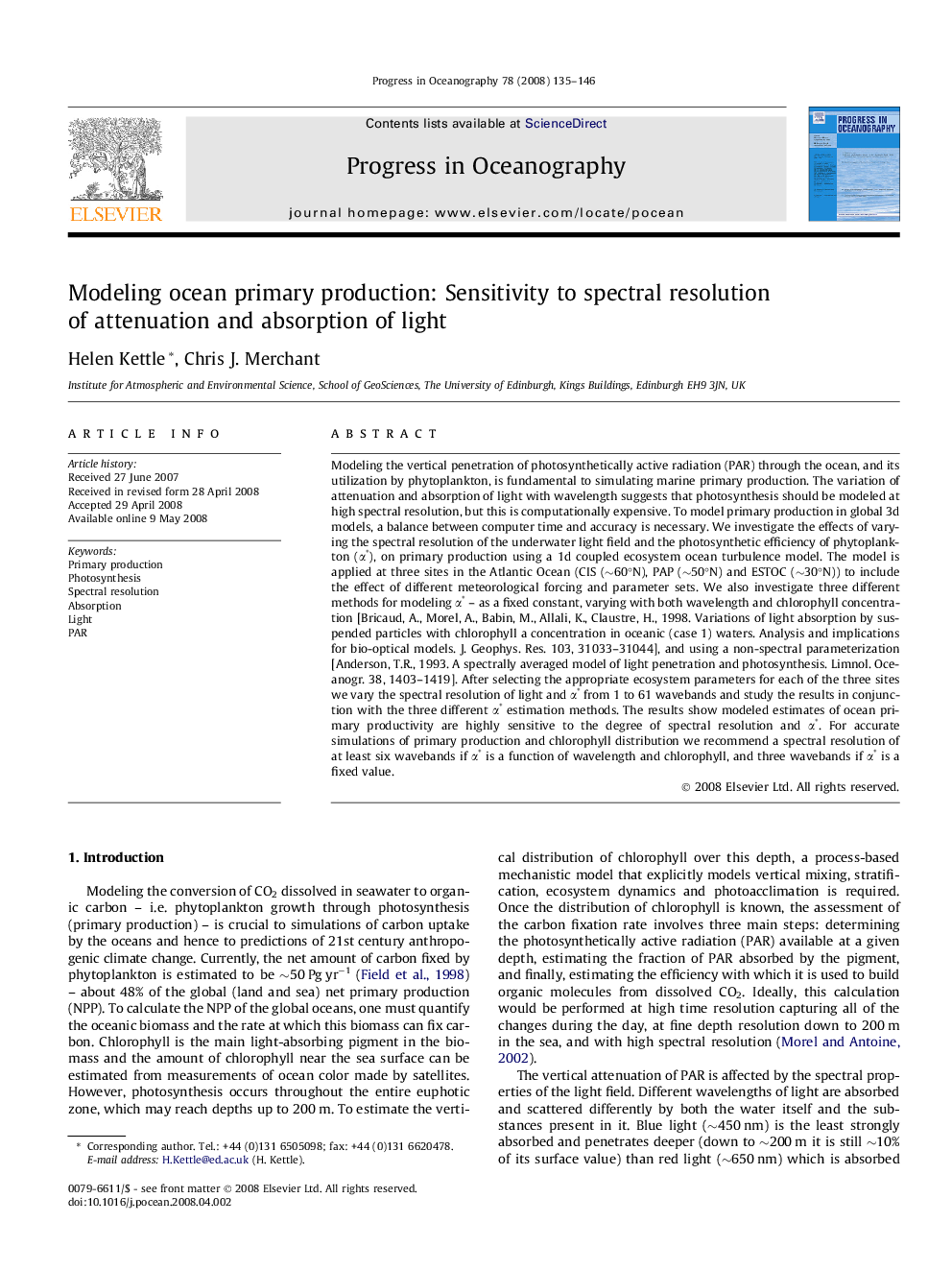| Article ID | Journal | Published Year | Pages | File Type |
|---|---|---|---|---|
| 4553690 | Progress in Oceanography | 2008 | 12 Pages |
Modeling the vertical penetration of photosynthetically active radiation (PAR) through the ocean, and its utilization by phytoplankton, is fundamental to simulating marine primary production. The variation of attenuation and absorption of light with wavelength suggests that photosynthesis should be modeled at high spectral resolution, but this is computationally expensive. To model primary production in global 3d models, a balance between computer time and accuracy is necessary. We investigate the effects of varying the spectral resolution of the underwater light field and the photosynthetic efficiency of phytoplankton (α∗), on primary production using a 1d coupled ecosystem ocean turbulence model. The model is applied at three sites in the Atlantic Ocean (CIS (∼60°N), PAP (∼50°N) and ESTOC (∼30°N)) to include the effect of different meteorological forcing and parameter sets. We also investigate three different methods for modeling α∗ – as a fixed constant, varying with both wavelength and chlorophyll concentration [Bricaud, A., Morel, A., Babin, M., Allali, K., Claustre, H., 1998. Variations of light absorption by suspended particles with chlorophyll a concentration in oceanic (case 1) waters. Analysis and implications for bio-optical models. J. Geophys. Res. 103, 31033–31044], and using a non-spectral parameterization [Anderson, T.R., 1993. A spectrally averaged model of light penetration and photosynthesis. Limnol. Oceanogr. 38, 1403–1419]. After selecting the appropriate ecosystem parameters for each of the three sites we vary the spectral resolution of light and α∗ from 1 to 61 wavebands and study the results in conjunction with the three different α∗ estimation methods. The results show modeled estimates of ocean primary productivity are highly sensitive to the degree of spectral resolution and α∗. For accurate simulations of primary production and chlorophyll distribution we recommend a spectral resolution of at least six wavebands if α∗ is a function of wavelength and chlorophyll, and three wavebands if α∗ is a fixed value.
